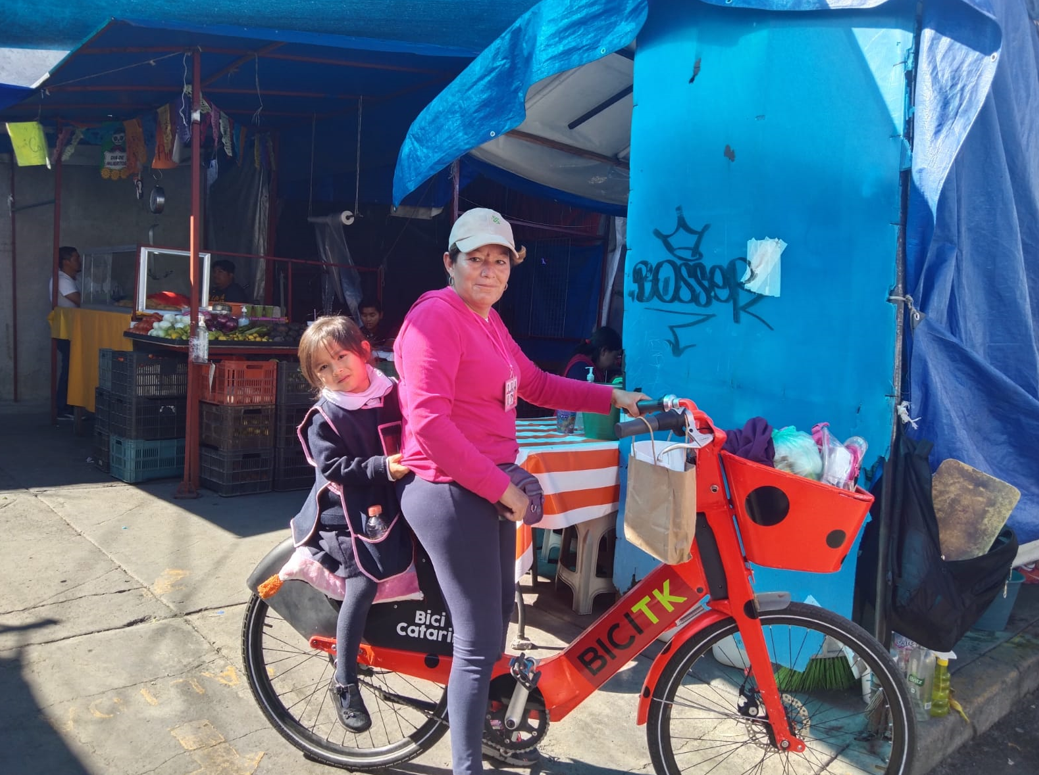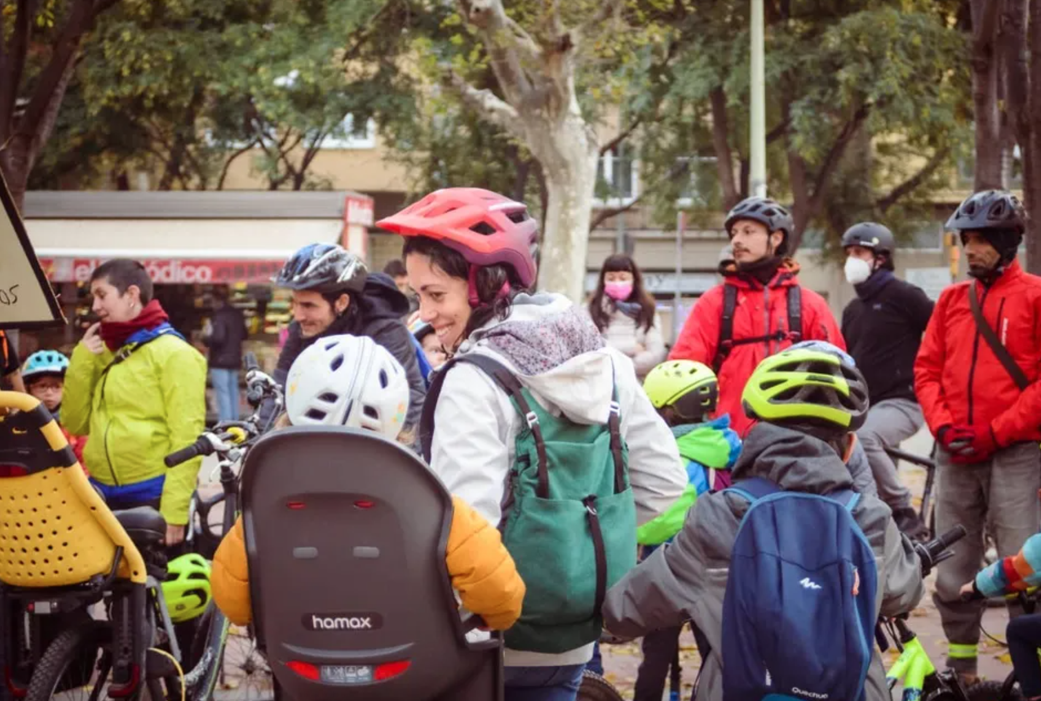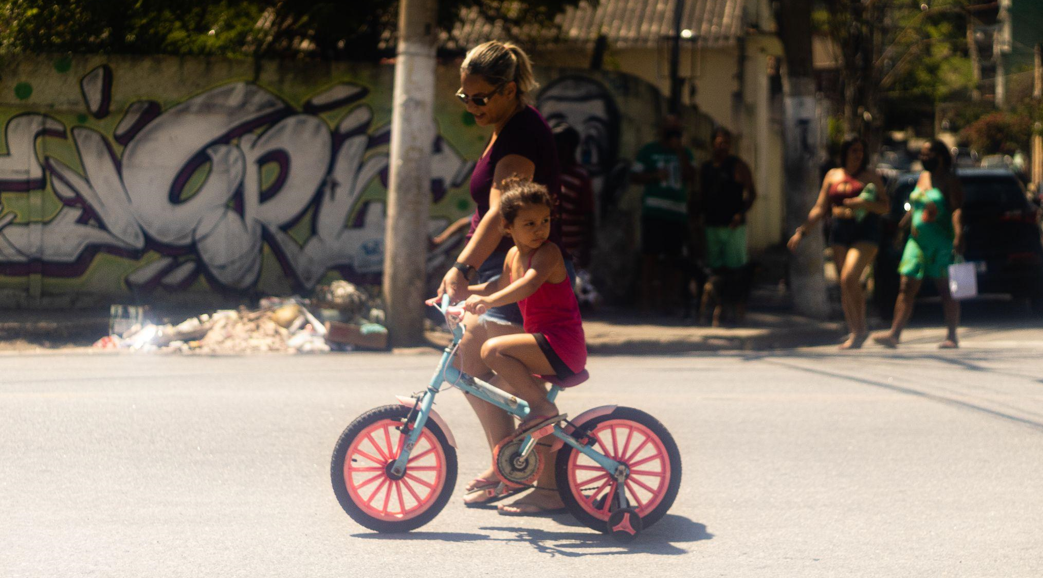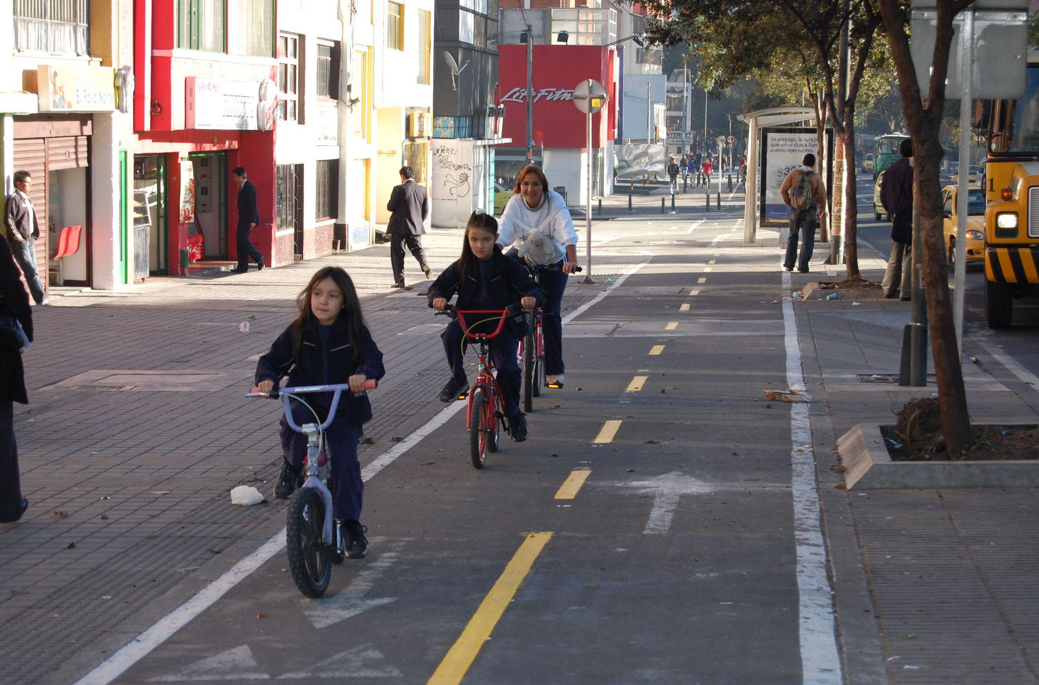Why Mobility of Care Matters, and Why Cycling Has a Role to Play
Guest Author: Lucas Snaije, Research & Advocacy Manager, BYCS

Source: Bicitekas/BYCS
Mobility options influence, and often define caring for children, alongside household upkeep such as groceries and other home-related tasks. Despite representing such a large portion of daily travel, often as high as 30% of all adult trips, these care journeys are not well considered in the transport literature, and even less so in transport policy agendas. Mobility of care matters, and the cycling community has a role to play in making it more healthy, safe, comfortable, and convenient.
Coined by Inés Sánchez de Madariaga (2009), « Mobility of Care » provides a framework for recognizing, measuring, making visible, valuing, and properly accounting for all the travel associated with those caring and household tasks needed undertaken by families. These trips are mainly carried out by primary caregivers who are most often women. Globally, it is estimated that over 70% of caregiving work is performed by women or girls. Caregiver trips are often short in nature, but can take time as routes are often inadequately served by public transport planning. To fulfil all care and household demands, caregivers chain several destinations in one trip, making their travel patterns complex, tiring, and costly.
This is where cycling could help. Cycling is an empowering tool for such trips, with various individual, social, economic and environmental benefits. Cycling provides a healthy, sustainable, energy efficient, affordable, and flexible way to move through the city. Cycling can offer moments of important interaction with a child, benefiting their socio-cognitive development. Cycling provides liberating feelings of independence, social belonging, and community cohesion.

Source: Calvox & Periche
However, very little research to date has provided a detailed account of people’s experiences completing care trips with young children by bicycle, leading to cities struggling to accommodate young children and families in their cycling strategies. This is why in 2020, we published our first report on the topic, in collaboration with Bernard van Leer Foundation, to inspire policy and planning changes as well as further academic research that are advantageous to children ages 0-3, caregivers, and families. Several steps need to be taken to make cycling inclusive of families, from more protected, connected cycle networks, better infrastructure standards, inclusive bike-share systems, to stronger awareness, access, and education programs. Caregivers and young children face many barriers to starting cycling, and their needs must be better taken into account.
Another important reason to facilitate cycling mobilities of care is that they are profoundly connected to the experiences of women cycling. Women are more likely to conduct care trips due to an unequal division of household labour. Many household-serving trips require the transport of goods or passengers, which can be perceived as too difficult on a bicycle. This has led researchers to hypothesise that the gendered distribution of household labour can contribute to the gender gap in cycling.

Source: Escola de Notícias/Prefeitura de Niterói/Urban 95
This critical gender gap that exists in cycling is among the highest inequalities in use across modes of transportation, and is true for the majority of cities around the world, except in contexts where infrastructure is of very high quality and a cycling culture is socially ingrained, such as the Netherlands or Denmark. Indeed, only one out of every three cyclists are women in low-cycling contexts, whereas this gap disappears in high-cycling cities.
In addition to key infrastructure improvements, several interventions to facilitate cycling, such as skills training or access to equipment, can support caregivers to move more freely and efficiently. In a few select cities around the world, government and non-governmental organisations have begun tackling this issue, by gathering necessary data to understand challenges, and beginning to implement solutions.

Source: Carlosfelipe Pardo
Bogotá, Colombia, is a strong example of a city moving towards a more caring and inclusive cycling strategy. The District Secretariat of Mobility, together with the District Secretariat of Women has, for example, conducted an exploratory study in public schools in four localities of Bogotá, that found that care trips by bicycle are mainly carried out in homes of low socioeconomic strata, accompanying children of an average of 8 years old.
It identified negative interaction with motorised vehicles, sexual harassment, perception of safety, and rudimentary and handmade accessories used to carry children as key challenges on those trips. The city is using this research to make such trips more comfortable and safe. Another measure taken by the city recently was to equip 300 bicycles in its new bike share system with seats to carry children or baskets, in order to facilitate the care journeys. These efforts are being implemented alongside a broader “Care Blocks” approach, an innovative urban planning approach that positions women, caregivers and care work right at the centre to organise several of the city’s services.
In 2022, we deepened our focus on this topic, by launching a new, global initiative to increase access to cycling for mobility of care in a cross-cultural context. Supported by the Bernard van Leer Foundation, and in partnership with local cycling NGOs, we coordinated and funded 3 education and access programs for caregivers in Turkey, Mexico, and India. During several months, over 100 women caregivers and their families received cycle training, gained access to cycles with proper equipment to carry goods and children, and took part in activities that created a supportive environment to start cycling. We tracked many positive effects, from economic savings on transportation, weight loss, feelings of freedom, independence, and confidence, to more quality time spent with children and other caregivers.

Source: Bicitekas/Chain Breaking Women/Purpose
From data gathering during these initiatives, alongside a global survey and further desk-based research, we developed a new report and toolkit, exploring ways to support cycling uptake for care journeys. The report highlights key benefits, barriers to cycling for caregivers, and proposes a set of policy and programmatic steps to take to ensure all caregivers, especially women, can gain the proper skills, self-efficacy, access to equipment, and develop aspirations to start cycling. The toolkit offers a step-by-step guide to implementing a cycle school for families, from planning and implementation, to impact measurement.
We’re excited to launch the report at Velo-city this year, during session 5.6 “Cycling Cities for Infants, Toddlers, and Caregivers” on May 10th, at 12:00, alongside representatives from Bernard van Leer, ITDP and GDCI, who are also working on the topic of young children and caregiver access to safe, comfortable and sustainable mobility.
About BYCS:
We are an Amsterdam-based global NGO guided by the belief that bicycles transform cities and cities transform the world. We envision an urban future in which half of city trips are by bicycle by the end of the decade. To help achieve this we nurture, strengthen, and scale community-led cycling initiatives globally, striving towards this bold vision that we call 50×30.
Visit the BYCS website: www.bycs.org



